1789
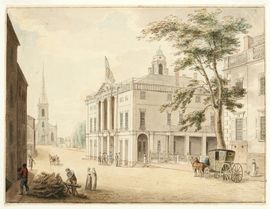
The Senate convened for the first time at Federal Hall in New York City. Because only eight senators were present, there were not enough to constitute a quorum until April 6, when Virginia's first senator, Richard Henry Lee of Westmoreland County arrived and was sworn into office. Lee was the 12th senator out of the eligible 22, and his arrival allowed the Senate to begin its work.
1789

The Senate drew lots to determine the three classes of senators. Richard Henry Lee was assigned to Class 2, with a four-year term set to expire in 1793. Virginia's second senator, William Grayson of Prince William County, who had not yet taken his seat, was assigned to Class 1, with a two-year term set to expire in 1791.
1790
Senator William Grayson became the first senator to die while in office. Grayson, who attained the rank of colonel during the Revolutionary War, died at age 50 halfway through the First Congress.
1792
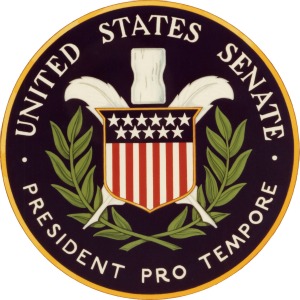
Richard Henry Lee was elected president pro tempore of the Senate, a position he held until October 8, 1792.
1795

Henry Tazewell of Brunswick County was elected president pro tempore of the Senate, a position he held until December 8, 1795.
1797

Thomas Jefferson of Albemarle County presided over the Senate as the second vice president of the United States. Jefferson and President John Adams belonged to different political parties--a situation that would prove to be unique in all the nation's history. Jefferson served as vice president until 1801, when he became the third president of the United States.
1816

James Barbour of Barboursville became chairman of the Senate Committee on Foreign Relations, a position he held until 1818 and again from 1820 to 1821, and 1822 to 1825.
1817

Former Virginia senator James Monroe of Westmoreland County took office as the fifth president of the United States. In 1820 President Monroe was unopposed and won a second term.
1818

John W. Eppes of Charles City became chairman of the Senate Committee on Finance, a position he held until 1819.
1819

James Barbour was elected president pro tempore of the Senate, a position he held until December 26, 1819.
1828

Littleton W. Tazewell of Norfolk became chairman of the Senate Committee on Foreign Relations, a position he held until 1832.
1832
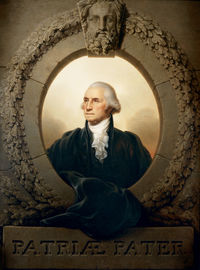
The Senate passed a resolution authorizing the secretary of the Senate to purchase artist Rembrandt Peale's masterpiece Patriae Pater for $2,000. The porthole portrait of George Washington hangs in the Old Senate Chamber.
1832

Littleton W. Tazewell was elected president pro tempore of the Senate, a position he held until December of that year.
1835

John Tyler of Gloucester was elected president pro tempore of the Senate, a position he held until December 6, 1835.
1836
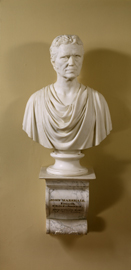
The Joint Committee on the Library was instructed to commission a marble bust of the late Chief Justice John Marshall to be placed in the chamber of the Supreme Court of the United States. The committee gave the commission to artist Hiram Powers, who completed the work in 1839.
1839
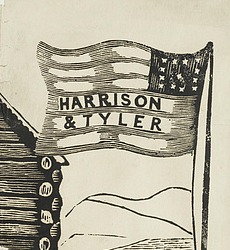
The Whig Party's national convention, held in Harrisburg, Pennsylvania, nominated John Tyler for vice president of the United States, on the ticket with William Henry Harrison. Harrison and Tyler, under the campaign slogan of "Tippecanoe and Tyler Too," won the 1840 election.
1841
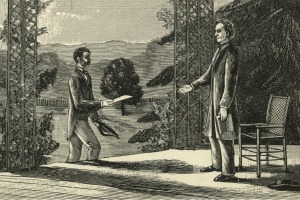
John Tyler presided over the Senate as the 10th vice president of the United States. Just one month later, Tyler was at his home in Williamsburg, Virginia, when he received news of the death of President William Henry Harrison from Robert Beale of Virginia, the assistant doorkeeper of the Senate, and Fletcher Webster, chief clerk of the State Department. Tyler took the oath of office as president of the United States on April 6, 1841.
1841

William C. Rives of Lindseys Store became chairman of the Senate Committee on Foreign Relations, a position he held until 1842.
1842

William S. Archer of Elk Hill became chairman of the Senate Committee on Foreign Relations, a position he held until 1845.
1845
Robert Beale of Virginia was elected sergeant at arms and doorkeeper of the Senate and was administered the oath. Beale served until March 17, 1853.
1850

Robert M. T. Hunter of Lloyds became chairman of the Senate Committee on Finance, a position he held until 1861.
1851

James M. Mason of Winchester became chairman of the Senate Committee on Foreign Relations, a position he held until 1861.
1857

James M. Mason was elected president pro tempore of the Senate, a position he held until March 4, 1857.
1858
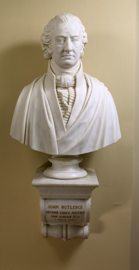
Artist Alexander Galt, a native of Norfolk, reported to the Senate from Florence, Italy, that he had completed the bust of Chief Justice John Rutledge which he had been commissioned to execute. The piece was shipped to the U.S. Capitol, and is currently displayed in the building's Old Supreme Court Chamber.
1859
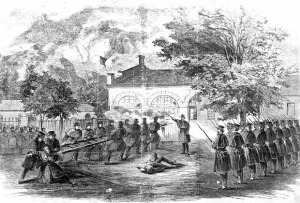
The Senate established its first investigating committee, the Select Committee to Inquire into the Facts of the Recent Invasion and Seizure of the United States Armory at Harper's Ferry. The committee was chaired by Senator James M. Mason, who introduced the resolution to form the committee.
1861
Virginia seceded from the Union. On March 28, Senators James M. Mason and Robert M. T. Hunter withdrew from the Senate. They were later formally expelled by the Senate.
1861
Waitman T. Willey of Monogalia County and John S. Carlile of Winchester were elected by Virginia's pro-Union legislature to fill the Senate vacancies caused by the withdrawal of Senators James M. Mason and Robert M. T. Hunter. On July 13 the Senate overwhelmingly rejected a motion by Senator James A. Bayard Jr. of Delaware challenging the pro-Union legislature's authority to elect, and the two were seated. Carlile remained in the Senate until March of 1865. Willey served until 1863 and was subsequently elected to be one of the first U.S. senators from the state of West Virginia.
1865
The Senate postponed consideration of the credentials of Joseph E. Segar and John C. Underwood, who were elected to the Senate by Virginia's pro-Union legislature. Senate Republicans had challenged the legitimacy of the Virginia state legislature, despite the fact that the state had maintained loyalist representation in the Senate throughout the Civil War. Virginia remained unrepresented in the Senate until the state was formally readmitted to representation in 1870.
1879

John W. Johnston of Abingdon became chairman of the Senate Committee on Agriculture (today's Committee on Agriculture, Nutrition, and Forestry), a position he held until 1881.
1881

William Mahone of Petersburg became chairman of the Senate Committee on Agriculture (today's Committee on Agriculture, Nutrition, and Forestry), a position he held until 1883.
1886
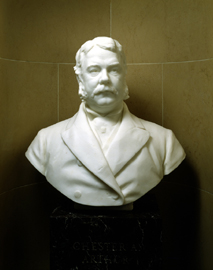
Virginia sculptor Moses Jacob Ezekiel accepted a commission to execute a bust of Thomas Jefferson. The bust is one of the first secured by Architect of the Capitol Edward Clark to be part of the Senate Vice Presidential Bust Collection.
1890
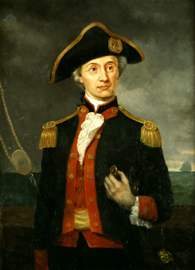
The Senate passed legislation for the purchase of the portrait of naval hero John Paul Jones by artist George Bagby Matthews of Tappahannock. The Senate later acquired an additional Matthews portrait of revolutionary leader Patrick Henry of Hanover County.
1897

Senator John W. Daniel of Lynchburg read George Washington's 1796 Farewell Address on the floor of the Senate, a tradition dating to 1862.
1899
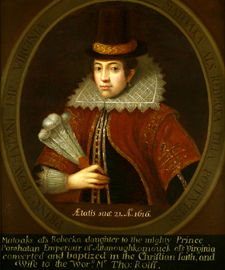
Henry S. Wellcome presented to the Senate a portrait of Pocahontas, the daughter of Powhatan, chief of a large Algonquian confederacy based in the tidewater region of Virginia. The portrait, by an unidentified artist, is a copy of an oil painting that originally hung in the English ancestral home of the Rolfes, the family of Pocahontas' husband.
1909
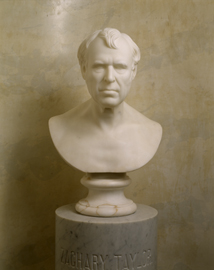
Congress appropriated funds for the purchase of a bust of President Zachary Taylor of Orange County from the widow of President Taylor's grandson, John Taylor Wood. The artist of the piece is unknown.
1911

Senate Democrats elected Thomas S. Martin of Charlottesville as their Conference chairman, despite the fact that three-time Democratic presidential candidate William Jennings Bryan came to the Capitol to oppose the conservative Martin's election. Martin served as chairman until 1913, when he stepped aside after conceding to likely defeat by the progressive John Worth Kern of Indiana.
1913
Thomas S. Martin became chairman of the Senate Committee on Appropriations, a position he held until 1919.
1914
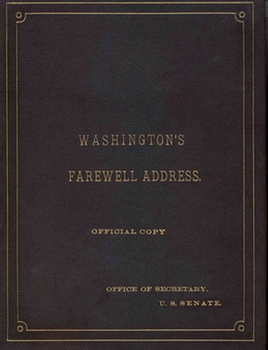
Senator Claude Augustus Swanson of Chatham read George Washington's 1796 Farewell Address on the floor of the Senate, a tradition dating to 1862.
1916
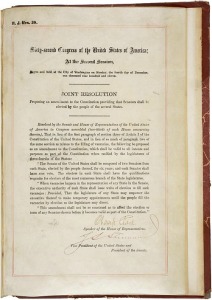
Claude A. Swanson became the first directly elected senator following adoption of the Seventeenth Amendment in 1913.
1923

Senator Carter Glass of Lynchburg read George Washington's 1796 Farewell Address on the floor of the Senate, a tradition dating to 1862.
1932
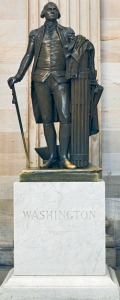
Congress accepted a bronze statue of Robert E. Lee, by artist Edward V. Valentine, and a bronze statue of George Washington, by artist Jean Antoine Houdon, as Virginia's two contributions to the National Statuary Hall Collection.
1933

Carter Glass became chairman of the Senate Committee on Appropriations, a position he held until 1946.
1933
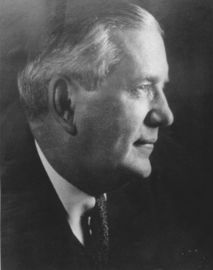
Edwin A. Halsey of Lynchburg, a long-time Senate employee, was elected secretary of the Senate. As secretary, Halsey demonstrated a keen interest in preserving the history of the Senate, spearheading the production of several history-based reference books and arranging for the first transfer of Senate records to the newly opened National Archives in 1937.
1941

Harry Flood Byrd of Berryville became chairman of the Senate Committee on Rules (today's Committee on Rules and Administration), a position he held until 1947.
1941

Carter Glass was elected president pro tempore of the Senate, a position he held until January 2, 1945.
1955
Harry Flood Byrd became chairman of the Senate Committee on Finance, a position he held until 1965.
1959

A. Willis Robertson of Lexington became chairman of the Senate Committee on Banking and Currency (today's Committee on Banking, Housing, and Urban Affairs), a position he held until 1966.
1959
Harry Flood Byrd became Virginia's longest-serving senator, surpassing the record of 26 years, 3 months, and 27 days set by Carter Glass. Byrd went on to serve a total of 32 years, 8 months, and 7 days.
1977
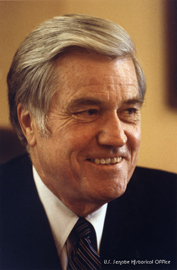
Stanley Kimmitt of Virginia became secretary of the Senate, a position he held until January 4, 1981.
1979

Senator John W. Warner of Alexandria read George Washington's 1796 Farewell Address on the floor of the Senate, a tradition dating to 1862.
1981
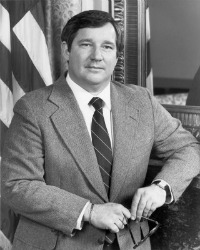
Howard S. Liebengood of Virginia became the Senate sergeant at arms, a position he held until September 12, 1983.
1982
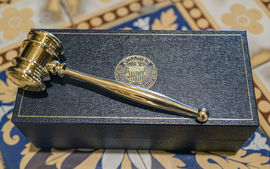
Senator John Warner received the Golden Gavel Award for presiding over the Senate for 100 hours in a single session.
1983

Senator Paul S. Trible Jr. of Alexandria read George Washington's 1796 Farewell Address on the floor of the Senate Chamber, a tradition dating to 1862.
1983
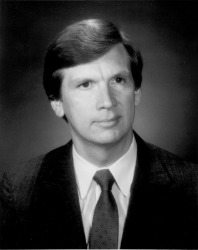
Larry E. Smith of Virginia became Senate sergeant at arms, a position he held until June 2, 1985.
1985
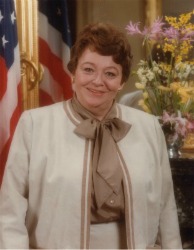
Jo-Anne L. Coe of Virginia became the first woman to serve as the secretary of the Senate, a position she held until January 6, 1987.
1986

Senator Paul Trible received the Golden Gavel Award for presiding over the Senate for 100 hours in a single session.
1989

Senator John Warner read George Washington's 1796 Farewell Address on the floor of the Senate for the second time.
1990

Senator Charles S. Robb of McLean read George Washington's 1796 Farewell Address on the floor of the Senate Chamber, a tradition dating to 1862.
1990
Senate Democrats elected Charles S. Robb chairman of the Democratic Senatorial Campaign Committee for the 102nd Congress (1991 to 1993).
1995
John Warner became chairman of the Senate Committee on Rules and Administration, a position he held until 1999.
1999
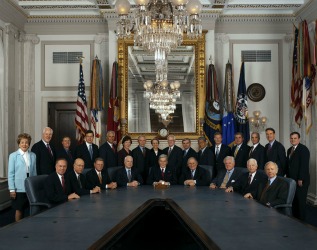
John Warner became chairman of the Senate Committee on Armed Services, a position he held until 2001, and again from 2003 to 2007.
2001

Senator George Allen of Chesterfield County read George Washington's 1796 Farewell Address on the floor of the Senate, a tradition dating to 1862.
2001
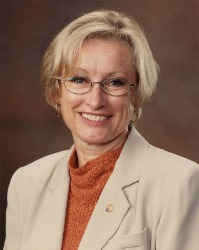
Jeri Thomson of Virginia became the 30th secretary of the Senate, a position she held until January 6, 2003.
2002
Senate Republicans elected George Allen as chairman of the National Republican Senatorial Committee for the 108th Congress (2003-2005).
2016

Senator Timothy Michael "Tim" Kaine of Richmond became his party's nominee for vice president of the United States at the Democratic National Convention. Kaine and presidential candidate (and former Senator) Hillary Clinton lost the November election.
2021

Mark R. Warner of Alexandria became chairman of the Senate Select Committee on Intelligence, a position he held until January 7, 2025.